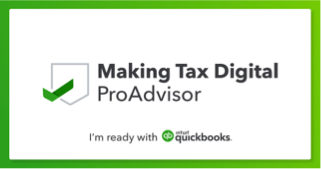Testimonials
[testimonial author]

Rated 5.0 on Quickbooks ProAdvistor

800+ Likes on Facebook

At KC Accountancy, we understand that navigating the intricacies of tax obligations can be daunting, especially when it comes to self-assessment. Whether you are self-employed, a landlord, or have other untaxed income, registering for self-assessment with HM Revenue and Customs (HMRC) is a crucial step. This blog aims to simplify the process and ensure you are fully informed.
What is Self-Assessment?
Self-assessment is a system HMRC uses to collect income tax. Tax is usually deducted automatically from wages, pensions, and savings. However, people and businesses with other income must report it through a self-assessment tax return. This includes:
– Self-employed individuals
– Partners in a business partnership
– Company directors
– Individuals with rental income
– Those with untaxed savings, investments, or dividends
– Individuals with overseas income
Why Register for Self-Assessment?
Registering for self-assessment is essential to ensure you comply with UK tax laws and avoid penalties. Failure to register and submit your tax return on time can result in fines and interest on unpaid taxes. Moreover, self-assessment allows you to claim various tax reliefs and expenses, potentially reducing your tax liability.
When to Register?
You must register for self-assessment by the 5th of October following the end of the tax year in which you received the income. For example, if you started receiving untaxed income in the 2023/24 tax year, you need to register by 5th October 2024.
How to Register for Self-Assessment
Before you start the registration process, ensure you have the following information at hand:
– National Insurance number
– Personal and business details
– Details of income received
Register Online
You can register for self-assessment online via the HMRC website. Follow these steps:
After Registration: What’s Next?
After you have registered, you will need to:
– File Your Tax Return: You will need to file your tax return online by the 31st January following the end of the tax year. For example, for the 2023/24 tax year, the deadline is 31st January 2025.
-Ensure you pay any tax owed by the 31st January deadline to avoid penalties and interest.
– Maintain accurate records of your income and expenses. HMRC requires you to keep records for at least five years after the 31st January submission deadline.
Tips for a Smooth Self-Assessment Process
– Don’t leave registration and filing to the last minute. Starting early helps avoid errors and missed deadlines.
– Consider using accounting software to keep track of your income and expenses. This can make the process of completing your tax return much simpler.
– If you are unsure about any aspect of self-assessment, seeking professional advice can save you time and ensure your tax affairs are in order.
At KC Accountancy, we are here to help you navigate the self-assessment process with ease. Our team of experts can assist you with registration, filing your tax return, and ensuring you claim all applicable tax reliefs. Contact us today to learn more about our services and how we can support you.
[testimonial author]

Rated 5.0 on Quickbooks ProAdvistor

800+ Likes on Facebook
Ready to feel more in control of your finances?
Book a free, no-obligation discovery call today and find out how we can help.
Tel. 01691 674792
Email. info@kcaccountancyservices.co.uk


